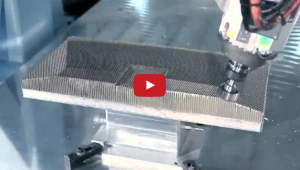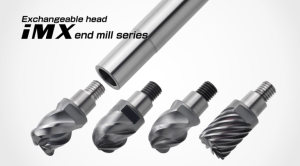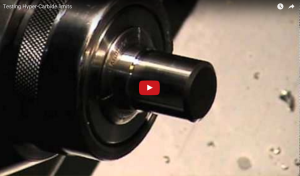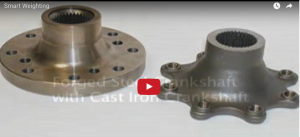Materials/Steel
Contact Details
Contact Details
Materials
Industry News for Materials
+ click to show 100 more results
Articles on Materials
+ click to show 100 more results
Author: Sandvik Coromant
Column: Feature Article
Published:
Column: Feature Article
Published:
Author: Brett Reeder
Column: Feature Article
Published:
Column: Feature Article
Published:
Author: William Leventon
Column: Feature Article
Published:
Column: Feature Article
Published:
Author: William Leventon
Column: Feature Article
Published:
Column: Feature Article
Published:
Author:
Column: Look Ahead Department
Published:
Column: Look Ahead Department
Published:
Author: Alan Richter
Column: Feature Article
Published:
Column: Feature Article
Published:
Author:
Column: Look Ahead Department
Published:
Column: Look Ahead Department
Published:
Author:
Column: Look Ahead Department
Published:
Column: Look Ahead Department
Published:
Author:
Column: Look Ahead Department
Published:
Column: Look Ahead Department
Published:
Author: CTE Staff
Column: Look Ahead Department
Published:
Column: Look Ahead Department
Published:
Author: Christopher Tate
Column: Feature Article
Published:
Column: Feature Article
Published:
Author:
Column: Look Ahead Department
Published:
Column: Look Ahead Department
Published:
Author:
Column: Look Ahead Department
Published:
Column: Look Ahead Department
Published:
Author:
Column: Look Ahead Department
Published:
Column: Look Ahead Department
Published:
Author: Alan Richter
Column: Feature Article
Published:
Column: Feature Article
Published:
Author: CTE Staff
Column: Look Ahead Department
Published:
Column: Look Ahead Department
Published:
Author: CTE Staff
Column: Look Ahead Department
Published:
Column: Look Ahead Department
Published:
Author: Larry Adams
Column: Feature Article
Published:
Column: Feature Article
Published:
Author: Alan Richter
Column: Feature Article
Published:
Column: Feature Article
Published:
Author: Alan Richter
Column: Feature Article
Published:
Column: Feature Article
Published:
Author: Aaron Eller
Column: Feature Article
Published:
Column: Feature Article
Published:
Author: Ken Schnepf
Column: Look Ahead Department
Published:
Column: Look Ahead Department
Published:
Author: John Saunders
Column: Shop Operations
Published:
Column: Shop Operations
Published:
Author: Ken Schnepf
Column: Look Ahead Department
Published:
Column: Look Ahead Department
Published:
Author: Alan Richter
Column: Feature Article
Published:
Column: Feature Article
Published:
Author: David Conigliaro
Column: Get With The Program Column
Published:
Column: Get With The Program Column
Published:
Author: Brett Reynolds
Column: Feature Article
Published:
Column: Feature Article
Published:
Author: Robert Weinstein
Column: Look Ahead Department
Published:
Column: Look Ahead Department
Published:
Author: Patrick Waurzyniak
Column: Feature Article
Published:
Column: Feature Article
Published:
Author: Dr. Scott Smith
Column: Machine Technology Column
Published:
Column: Machine Technology Column
Published:
Author: Alan Richter
Column: Feature Article
Published:
Column: Feature Article
Published:
Author: Edmund Isakov, Ph.D.
Column: Feature Article
Published:
Column: Feature Article
Published:
Author: Bill Kennedy
Column: Feature Article
Published:
Column: Feature Article
Published:
Author: Edmund Isakov, Ph.D.
Column: Feature Article
Published:
Column: Feature Article
Published:
Author: Bill Kennedy
Column: Feature Article
Published:
Column: Feature Article
Published:
Author: Bill Kennedy
Column: Feature Article
Published:
Column: Feature Article
Published:
Author: Jeff Lantrip
Column: Feature Article
Published:
Column: Feature Article
Published:
Author: Edmund Isakov, Ph.D.
Column: Feature Article
Published:
Column: Feature Article
Published:
Author: John L. Johnson, Ph.D.
Column: Feature Article
Published:
Column: Feature Article
Published:
Author: Alan Richter
Column: Feature Article
Published:
Column: Feature Article
Published:
Author: Daniel Margolis
Column: Feature Article
Published:
Column: Feature Article
Published:
Author: Dr. LaRoux K. Gillespie
Column: Feature Article
Published:
Column: Feature Article
Published:
Author: Alan Richter
Column: Feature Article
Published:
Column: Feature Article
Published:
Author: Daniel Margolis
Column: Feature Article
Published:
Column: Feature Article
Published:
Author: Prakash Mirchandani
Column: Feature Article
Published:
Column: Feature Article
Published:
Author: Van Niser
Column: Feature Article
Published:
Column: Feature Article
Published:
Author: Jason Wells
Column: Feature Article
Published:
Column: Feature Article
Published:
Author: Greg Landgraf
Column: Feature Article
Published:
Column: Feature Article
Published:
Author: Bill Kennedy
Column: Feature Article
Published:
Column: Feature Article
Published:
Author: Alan Richter
Column: Feature Article
Published:
Column: Feature Article
Published:
Author: David Novak
Column: Feature Article
Published:
Column: Feature Article
Published:
Author: Paul E. Augustus
Column: Feature Article
Published:
Column: Feature Article
Published:
Author: Bill Kennedy
Column: Feature Article
Published:
Column: Feature Article
Published:
Author: Alan Richter
Column: Feature Article
Published:
Column: Feature Article
Published:
Author: Jeffrey A. Badger, Ph.D.
Column: Feature Article
Published:
Column: Feature Article
Published:
Author: Alan Richter
Column: Feature Article
Published:
Column: Feature Article
Published:
Author: Rich Dzierwa
Column: Feature Article
Published:
Column: Feature Article
Published:
Author: Charles M. Boyles
Column: Feature Article
Published:
Column: Feature Article
Published:
Author: Stephen A. Batzer
Column: Feature Article
Published:
Column: Feature Article
Published:
Author: Bill Kennedy
Column: Feature Article
Published:
Column: Feature Article
Published:
Author: Bill Kennedy
Column: Feature Article
Published:
Column: Feature Article
Published:
Author: Jim Rowe
Column: Feature Article
Published:
Column: Feature Article
Published:
Author: Bill Kennedy
Column: Feature Article
Published:
Column: Feature Article
Published:
Author: Michael Deren
Column: Feature Article
Published:
Column: Feature Article
Published:
Author: Charles M. Boyles
Column: Feature Article
Published:
Column: Feature Article
Published:
Author: Alan Richter
Column: Feature Article
Published:
Column: Feature Article
Published:
Author: Brian Cline
Column: Feature Article
Published:
Column: Feature Article
Published:
Author: Frank Mullett
Column: Feature Article
Published:
Column: Feature Article
Published:
Author: Bill Bryson
Column: Feature Article
Published:
Column: Feature Article
Published:
Author: Charles M. Boyles
Column: Feature Article
Published:
Column: Feature Article
Published:
Author: Brad Lewis
Column: Feature Article
Published:
Column: Feature Article
Published:
Author: Tom Howes
Column: Feature Article
Published:
Column: Feature Article
Published:
Author: Kimberly R. Pontius
Column: Feature Article
Published:
Column: Feature Article
Published:
Author: Mike Castner
Column: Feature Article
Published:
Column: Feature Article
Published:
Author: Derek Phillips
Column: Feature Article
Published:
Column: Feature Article
Published:
Author: Joseph Halloran
Column: Feature Article
Published:
Column: Feature Article
Published:
Author: Norman Rohr
Column: Feature Article
Published:
Column: Feature Article
Published:
Author: Ronald Biagiotti
Column: Feature Article
Published:
Column: Feature Article
Published:
Author: Louis Caldarera Jr.
Column: Feature Article
Published:
Column: Feature Article
Published:
Author: Andrew Johnson
Column: Feature Article
Published:
Column: Feature Article
Published:
Author: Changsheng Guo
Column: Feature Article
Published:
Column: Feature Article
Published:
Author: Bernard North
Column: Feature Article
Published:
Column: Feature Article
Published:
Author: William Cleveland
Column: Feature Article
Published:
Column: Feature Article
Published:
Author: E. Gorzkowski
Column: Feature Article
Published:
Column: Feature Article
Published:
Author: Robert Weinstein
Column: Look Ahead Department
Published:
Column: Look Ahead Department
Published:
Author: Alan Richter
Column: Feature Article
Published:
Column: Feature Article
Published:
Author: Kip Hanson
Column: Feature Article
Published:
Column: Feature Article
Published:
Author: Christopher Tate
Column: Feature Article
Published:
Column: Feature Article
Published:
Author: Kip Hanson
Column: Feature Article
Published:
Column: Feature Article
Published:
Author: Alan Richter
Column: Lead Angle Column
Published:
Column: Lead Angle Column
Published:
Author: Kip Hanson
Column: Feature Article
Published:
Column: Feature Article
Published:
Author: Jim Wyant
Column: Feature Article
Published:
Column: Feature Article
Published:
Author: Michael C. Anderson
Column: Look Ahead Department
Published:
Column: Look Ahead Department
Published:
Author: Michael C. Anderson
Column: Feature Article
Published:
Column: Feature Article
Published:
Author: Michael C. Anderson
Column: Look Ahead Department
Published:
Column: Look Ahead Department
Published:
Author: William Leventon
Column: Machine Technology Column
Published:
Column: Machine Technology Column
Published:
Author: Michael C. Anderson
Column: Feature Article
Published:
Column: Feature Article
Published:
Author:
Column: Feature Article
Published:
Column: Feature Article
Published:
Author: Alan Richter
Column: Feature Article
Published:
Column: Feature Article
Published:
Author:
Column: Feature Article
Published:
Column: Feature Article
Published:
Videos on Materials
+ click to show 19 more results
Products for Materials
+ click to show 100 more results
Buyers Guide Companies for Materials
+ click to show 5 more results
| American Natl. Carbide | 281-351-7165 | http://www.anconline.com |
| Ceratizit USA Inc. | 800-783-2280 | https://cuttingtools.ceratizit.com/us/en.html |
| Ebbco Inc. | 586-716-5151 | http://www.ebbcoinc.com |
| Tool Systems Inc. | 440-461-6363 | http://www.toolsystemsinc.com |
| Tungco Powder Procurement | 270-825-0000 | https://tungco.com |
Pagination
Sponsored Content
© Copyright 1995 - 2025. Cutting Tool Engineering. All rights reserved.





























